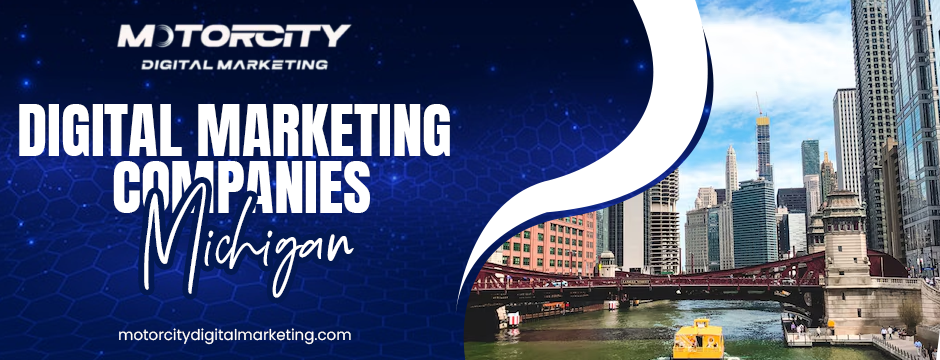In the modern business world, understanding your customer is no longer optional. Businesses that know their customers can create experiences that attract attention, build trust, and drive revenue. Advanced customer journey mapping is one of the most effective tools to achieve this. By analyzing every interaction a customer has with a brand, businesses can target the right touchpoints, improve experiences, and increase conversions.
For businesses in Michigan, working with experienced Digital Marketing Companies Michigan can make the difference between guesswork and informed strategy. Similarly, a Michigan Digital Transformation Agency can provide the guidance needed to implement complex mapping effectively.

What Is Customer Journey Mapping?
Customer journey mapping is the process of visualizing a customer’s experience with your business. It captures every interaction, from the first point of contact to post-purchase engagement. The goal is to understand how customers move through different stages and how your brand can guide them smoothly.
This is not just about listing touchpoints. Advanced mapping digs deeper into customer behavior, preferences, and pain points. It provides insights that help businesses tailor messages, offers, and experiences to each stage of the journey.
Why Advanced Customer Journey Mapping Matters
Basic journey mapping shows the flow of customer interactions. Advanced mapping goes beyond this. It helps businesses:
- Understand Behavior: Track how customers interact across channels. This helps predict next steps.
- Personalize Experiences: Tailored content and offers increase engagement and loyalty.
- Optimize Resources: Focus marketing efforts on touchpoints that generate the highest return.
- Discover Opportunities: Identify gaps where customers struggle or drop off.
Companies that embrace advanced customer journey mapping can deliver seamless experiences. This is especially important for Michigan businesses looking to grow. A Michigan Digital Transformation Agency can help you turn insights into actionable strategies.
Stages of the Customer Journey
Customer journeys are not all the same, but most journeys include several common stages. Each stage has unique opportunities for engagement.
Awareness
The awareness stage is when potential customers first learn about your brand. They may discover you through social media posts, search engine results, paid ads, or word-of-mouth. At this stage, the goal is to capture attention and spark interest.
Advanced mapping tools can show which channels are most effective at attracting the right audience. This helps businesses allocate marketing resources efficiently.
Consideration
Once a customer is aware, they move to the consideration stage. Here, they compare options, read reviews, and evaluate your offerings. This stage is crucial because customers are deciding whether they trust your brand.
Analyzing interactions like website visits, content downloads, and email engagement helps identify what influences decision-making. Businesses can then optimize these touchpoints to encourage conversions.
Purchase
The purchase stage is where customers make a buying decision. A smooth and simple process is essential to prevent drop-offs.
Advanced journey mapping can reveal obstacles in the purchase process. Complicated checkout processes or unclear pricing can discourage customers. Fixing these issues increases conversion rates and revenue.
Retention
Retaining customers is often more cost-effective than acquiring new ones. The retention stage focuses on maintaining relationships through ongoing engagement. Loyalty programs, newsletters, and personalized offers keep customers coming back.
Mapping identifies the touchpoints that encourage repeat purchases. It also helps businesses monitor satisfaction and respond quickly to concerns.
Advocacy
The final stage is advocacy. Satisfied customers become brand ambassadors, sharing their experiences with others. This stage can greatly amplify marketing efforts at minimal cost.
Journey mapping highlights the moments when advocacy is likely to occur. Fostering these opportunities generates reviews, referrals, and social engagement.
Key Touchpoints for Targeted Digital Marketing
Targeted digital touchpoints are interactions that create meaningful engagement. Key touchpoints include:
- Website Interaction: Homepage visits, product pages, blogs, and checkout.
- Social Media Engagement: Likes, comments, shares, and direct messages.
- Email Campaigns: Opens, click-throughs, and responses to promotions.
- Customer Support: Calls, chats, and helpdesk interactions.
- In-Person Experiences: Store visits, events, and demos.
By analyzing each touchpoint, businesses can find strengths and weaknesses. Optimizing these interactions ensures customers move smoothly through the journey.
Benefits of Targeted Digital Touchpoints
Targeted touchpoints deliver messages to the right audience at the right time. The benefits are clear:
- Higher Conversion Rates: Personalized interactions encourage customers to act.
- Better Experience: Tailored content creates trust and engagement.
- Efficient Budget Use: Marketing resources focus on channels with the best results.
- Customer Loyalty: Consistent and meaningful engagement builds long-term relationships.
Businesses in Michigan can gain a competitive edge by focusing on targeted touchpoints. Partnering with Digital Marketing Companies Michigan helps implement these strategies successfully.
How to Implement Advanced Customer Journey Mapping
Implementing advanced journey mapping requires careful planning and execution. Here is a step-by-step approach:
Step 1: Gather Customer Data
Collect data from all touchpoints. This includes website analytics, social media interactions, email performance, and feedback from customers. Comprehensive data gives a full view of behavior.
Step 2: Identify Customer Personas
Segment customers into personas based on demographics, behaviors, and preferences. Understanding personas helps craft targeted messages for each group.
Step 3: Map the Journey
Create a visual map for each persona. Include every interaction, from awareness to advocacy. Highlight areas where customers experience friction or drop off.
Step 4: Analyze and Optimize
Review the journey to find improvement opportunities. Optimize touchpoints to enhance engagement, simplify processes, and remove barriers to conversion.
Step 5: Monitor and Refine
Customer behavior changes over time. Continuously monitor interactions and update maps to reflect new insights. Regular refinement keeps your strategy effective.
Challenges in Customer Journey Mapping
Even experienced teams face challenges:
- Incomplete Data: Missing information can lead to incorrect conclusions.
- Complex Behavior: Multiple channels and interactions make tracking difficult.
- Team Alignment: Marketing, sales, and support teams must coordinate.
- Measuring Impact: Linking improvements directly to revenue can be tricky.
Working with a Michigan Digital Transformation Agency can help overcome these challenges. They provide expertise, tools, and processes to make journey mapping actionable.
Real-World Applications
Customer journey mapping has practical benefits across industries. Some examples include:
- Reducing shopping cart abandonment for e-commerce stores.
- Improving engagement in subscription services.
- Streamlining lead nurturing for B2B companies.
- Enhancing customer experience in retail stores.
- Encouraging loyalty and repeat purchases in service-based businesses.
When applied thoughtfully, journey mapping directly affects revenue growth and customer satisfaction.
Motorcity Digital Marketing Agency: Our Approach
At Motorcity Digital Marketing Agency, we specialize in advanced customer journey mapping. We work closely with businesses to understand their customers and identify meaningful touchpoints.
We focus on creating strategies that drive results. Our team helps optimize every stage of the customer journey to improve conversions and revenue. We have experience working with businesses of all sizes across Michigan.
We take a practical, data-driven approach. By combining insights with actionable strategies, we help businesses deliver seamless experiences. Our goal is to help you reach your full potential and grow sustainably.

Conclusion
Advanced customer journey mapping is a powerful tool for businesses looking to increase revenue and build stronger customer relationships. By understanding behavior, identifying key touchpoints, and optimizing interactions, companies can create meaningful experiences that convert.
For Michigan businesses, partnering with experienced Digital Marketing Companies Michigan provides the expertise needed to implement these strategies successfully.
Customer journey mapping is an ongoing process. It requires monitoring, analysis, and adaptation. Businesses that focus on the customer and optimize touchpoints are better positioned to grow.
By implementing advanced mapping techniques, companies can increase conversion rates, improve customer satisfaction, and foster long-term loyalty. For businesses in Michigan, this approach is a key driver of success in the digital age.
